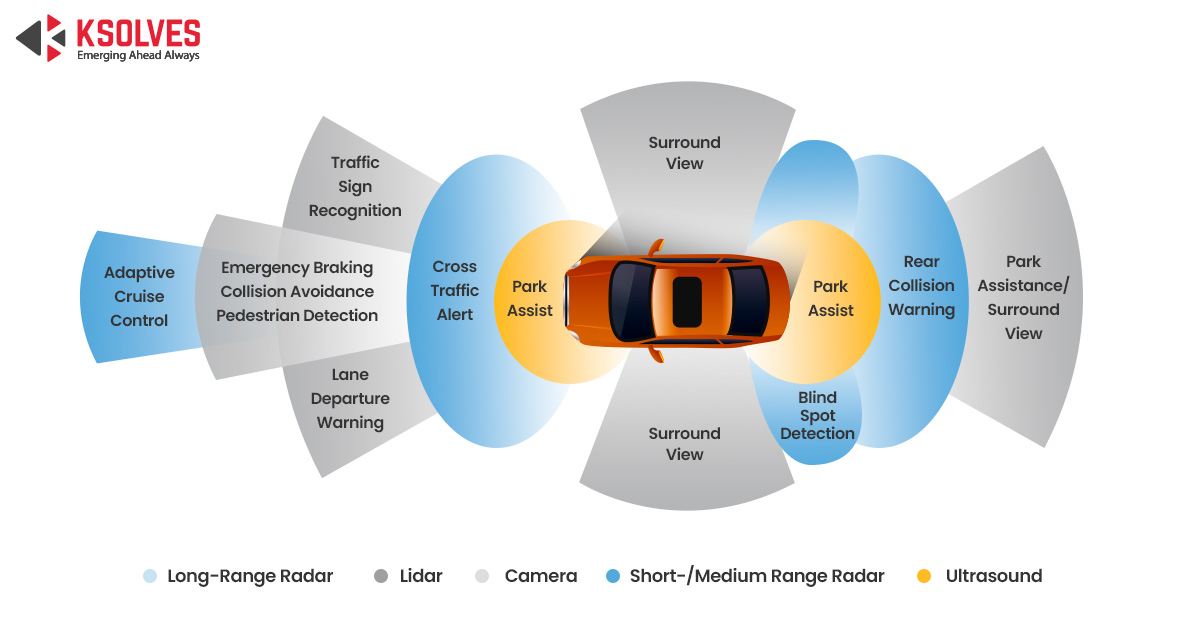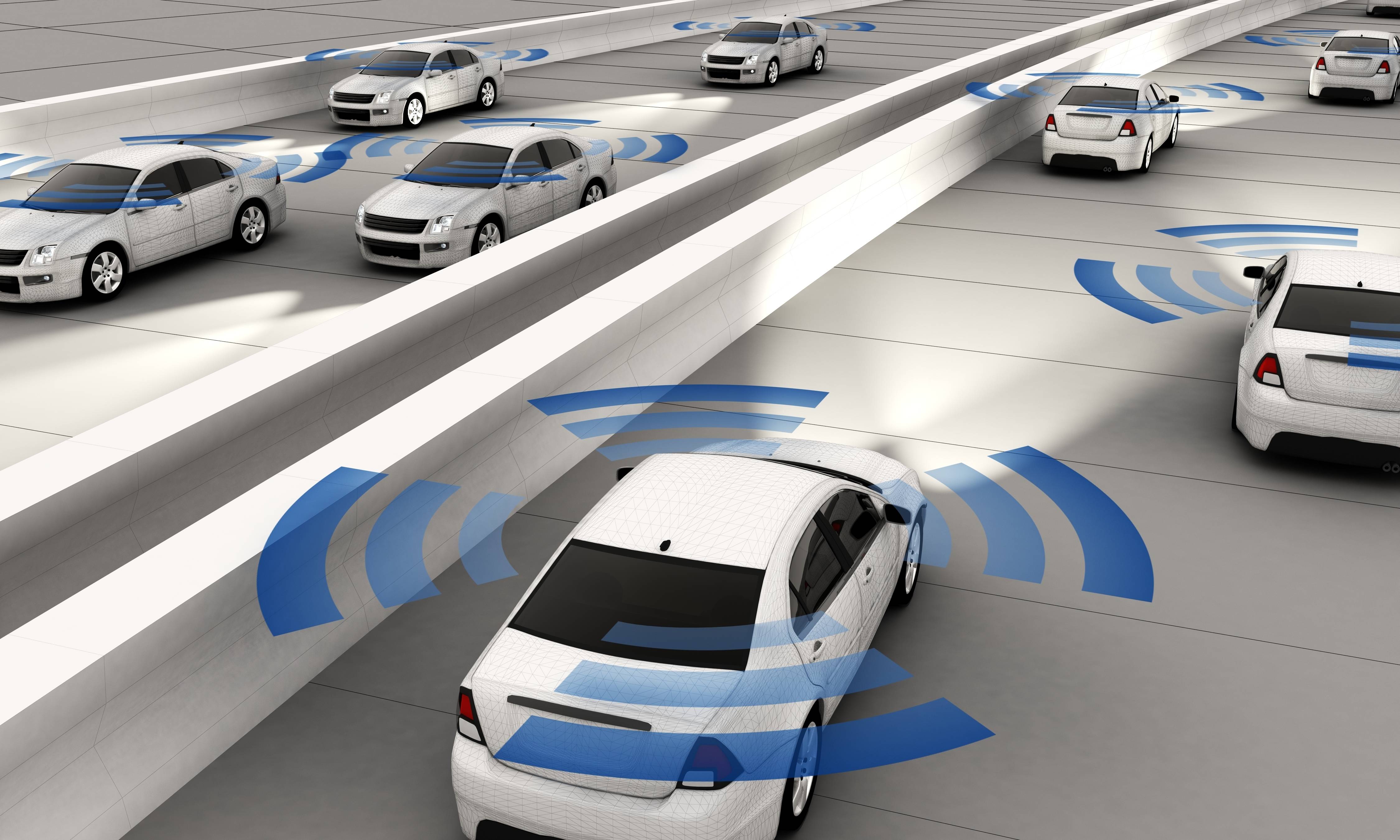The way we drive is changing faster than ever. Forget just getting from A to B; your next car is poised to be a co-pilot, a guardian angel, and a smart assistant all rolled into one, thanks to rapidly advancing driver-assistance systems. With commutes getting longer for some and the desire for safer, less stressful journeys on the rise, understanding these technologies is key. This article breaks down the top 10 Advanced Driver-Assistance Systems (ADAS) you should be looking for in 2025, explaining what they do and why they’re becoming essential for every driver, especially those eyeing affordable, futuristic, or smart automotive solutions.
Table of Contents
The ADAS Revolution: Safer, Smarter Roads Ahead
Advanced Driver-Assistance Systems, or ADAS, are no longer a futuristic dream confined to luxury vehicles; they are rapidly becoming standard, transforming our daily drives into safer and more comfortable experiences. These intelligent systems use a network of sensors, cameras, and sophisticated software to monitor the vehicle’s surroundings, anticipate potential hazards, and in many cases, take action to prevent accidents or reduce their severity.
The evolution of ADAS has been remarkable. Just a few years ago, features like adaptive cruise control were high-end options. Now, comprehensive suites of safety tech are available even on many affordable 2025 models, including a growing number of electric vehicles (EVs) where cutting-edge technology is often a core selling point. This democratization of safety tech means more peace of mind for everyone on the road.

Top 10 Must-Have ADAS Features for 2025
As you shop for your next car in 2025, these ten ADAS features should be high on your checklist for a truly modern and secure driving experience. They represent the cutting edge of widely available assistance technologies, moving beyond simple warnings to provide active support.
- Enhanced Adaptive Cruise Control (ACC) with Stop & Go and Lane Centering: This isn’t just about maintaining speed. Modern ACC can bring your car to a complete stop in traffic and resume driving, while Lane Centering actively keeps you in the middle of your lane, significantly reducing fatigue on long highway stretches or in tedious stop-and-go commutes.
- Comprehensive Automatic Emergency Braking (AEB) with Pedestrian, Cyclist, and Junction Assist: AEB is a lifesaver, automatically applying brakes if a frontal collision is imminent. The 2025 standard includes robust detection of pedestrians and cyclists, even in low light, plus Junction Assist, which can intervene if you attempt an unsafe turn across traffic.
- Sophisticated Lane Keep Assist (LKA) and Lane Departure Warning (LDW) with Road Edge Detection: LDW alerts you if you drift, while LKA provides gentle steering input to guide you back. Advanced systems now also detect road edges, even without clear markings, crucial for rural roads.
- Blind Spot Monitoring (BSM) with Rear Cross-Traffic Alert (RCTA) and Safe Exit Assist: BSM warns of vehicles in your blind spots. RCTA alerts you to approaching traffic when reversing out of parking spots. Safe Exit Assist can prevent occupants from opening a door into the path of an oncoming cyclist or vehicle.
- 360-Degree Surround-View Camera System with 3D View: Using multiple cameras, this system creates a bird’s-eye view of your car and its immediate surroundings, making parking and low-speed maneuvers in tight spots incredibly easy and safe. Many now offer a 3D perspective you can manipulate.
- Advanced Driver Monitoring System (DMS) / Attentiveness Assist: These systems use a camera facing the driver to detect signs of drowsiness, distraction (like phone use), or impairment. They provide escalating warnings and can even suggest taking a break.
- Traffic Sign Recognition (TSR) with Intelligent Speed Assist (ISA): TSR uses cameras to read speed limit signs, no-passing zones, and other important road signs, displaying them on your dashboard. ISA can automatically adjust the adaptive cruise control speed to the detected limit or prompt the driver to do so.
- Next-Generation Parking Assist Systems: Beyond simple sensors, these systems can range from semi-autonomous (controlling steering while you manage pedals) to fully autonomous parallel and perpendicular parking, taking the stress out of tricky parking situations.
- Enhanced Night Vision or Advanced Forward Lighting (e.g., Adaptive Driving Beam): Night Vision systems use infrared cameras to detect pedestrians or animals far beyond headlight range. Adaptive Driving Beam (ADB) or Matrix LED headlights shape the light beam to provide maximum illumination without dazzling oncoming drivers.
- Basic Vehicle-to-Everything (V2X) Communication: While still emerging, more 2025 models will feature V2X (including V2V – vehicle-to-vehicle, and V2I – vehicle-to-infrastructure). This allows cars to “talk” to each other and to smart infrastructure, sharing warnings about hazards like black ice, accidents ahead, or impending red-light violations.

Key ADAS Benefits at a Glance
Understanding the core purpose of different ADAS categories can help you prioritize what matters most for your driving needs. These systems work together to create a comprehensive safety net.
| Feature Category | Key Benefit(s) | Example Systems |
| Collision Avoidance | Prevents or mitigates crashes, protects occupants & vulnerable road users | AEB, Forward Collision Warning, Junction Assist |
| Driving Assistance | Reduces driver fatigue, improves comfort, maintains lane discipline | ACC with Stop & Go, Lane Centering, Lane Keep Assist |
| Awareness & Visibility | Enhances situational awareness, reduces blind spots, aids in poor conditions | BSM, RCTA, 360 Camera, Night Vision, Adaptive Headlights |
| Parking & Maneuvering | Simplifies parking, prevents low-speed bumps and scrapes | Parking Assist, Rear Parking Sensors, RCTA |
| Driver State Monitoring | Alerts to driver fatigue, distraction, or impairment | Driver Monitoring System, Attentiveness Assist |
| Information & Compliance | Keeps driver informed of regulations, assists with speed control | Traffic Sign Recognition, Intelligent Speed Assist |
Real-World Impact: How These Features Protect You Daily
These ADAS features aren’t just fancy tech; they offer tangible benefits that make everyday driving safer and less stressful. Imagine cruising on the highway during your commute; Enhanced Adaptive Cruise Control with Lane Centering handles the speed adjustments and slight steering, letting you arrive more relaxed.
In busy city streets, AEB with pedestrian and cyclist detection is like an extra set of eyes, ready to intervene if a person suddenly steps into your path. When you’re trying to change lanes on a crowded multi-lane road, Blind Spot Monitoring and Rear Cross-Traffic Alert provide crucial warnings, preventing near-misses. And for those dreaded tight parking spots, a 360-degree camera and Parking Assist can turn a stressful ordeal into a simple task. Even a momentary lapse in attention on a long drive can be caught by a Driver Monitoring System, potentially preventing a serious accident.

The AI Brains Behind the Brawn: Understanding Smart Safety
The magic behind these ADAS features lies in a sophisticated combination of sensors and artificial intelligence (AI). Your car essentially develops an “awareness” of its surroundings through:
- Cameras: These are the “eyes,” providing visual data for lane markings, traffic signs, pedestrians, and other vehicles.
- Radar: Radio waves are used to detect the speed and distance of objects, even in poor weather conditions where cameras might struggle.
- LiDAR (Light Detection and Ranging): Increasingly common, LiDAR uses laser pulses to create a detailed 3D map of the environment, offering precise distance and object recognition.
- Ultrasonic Sensors: Typically used for short-range detection, like in parking assist systems.
This raw data is then fed into powerful onboard computers. “This is where AI and machine learning come into play,” explains auto tech analyst Lena Petrova. “Algorithms perform ‘sensor fusion,’ combining data from multiple sources to build a comprehensive understanding of the driving scenario. The AI then makes near-instantaneous decisions – whether to alert the driver, apply the brakes, or make a steering adjustment.” This smart processing is what allows ADAS to react faster and sometimes more reliably than a human driver alone.
Beyond Alerts: How ADAS Boosts Your Overall Driving Experience
Modern ADAS isn’t just about beeping at you; it actively contributes to a smoother, more comfortable, and ultimately safer journey. While the primary function is undeniably safety, the ripple effects on the overall driving experience are significant.
Features like ACC with Stop & Go and Lane Centering dramatically reduce the mental load on drivers during long highway drives or in congested traffic. This means you arrive at your destination feeling less fatigued and more refreshed. The seamless operation of well-tuned LKA can make highway driving feel more fluid and controlled. Even parking, a common source of stress for many, becomes far more manageable with advanced assist systems. This holistic improvement in driving ease and confidence is a key reason for the growing consumer demand for comprehensive ADAS suites.
Why These 10 Features are Game-Changers for 2025
The selected ADAS features for 2025 represent a significant leap towards proactive safety and enhanced driver convenience, marking a turning point in mainstream automotive technology. What makes them game-changers is their increasing sophistication, integration, and accessibility. Earlier ADAS often worked in isolation; now, they form an interconnected network.
For example, data from Traffic Sign Recognition can inform Intelligent Speed Assist, which then works with Adaptive Cruise Control. This level of system synergy provides a more intuitive and effective safety net. “We’re moving from systems that simply react to danger to systems that can anticipate and help avoid it more intelligently,” notes industry expert Mark Jefferson. This proactive capability, combined with their wider availability in affordable car segments and EVs, is fundamentally changing our expectations of what a new car should offer.

Expert Opinions: What the Pros are Saying About 2025 ADAS
Automotive journalists and industry analysts are largely enthusiastic about the trajectory of ADAS technology, emphasizing its life-saving potential and the rapid pace of innovation.
“The refinement we’re seeing in ADAS for 2025 models is remarkable,” says Lena Petrova. “Systems are becoming less intrusive yet more effective. The focus is shifting towards a more natural, co-pilot-like interaction, which is crucial for driver acceptance.”
Mark Jefferson, a veteran auto industry watcher, adds, “For middle-income consumers and EV buyers, these ADAS features are no longer just ‘nice-to-haves.’ They are increasingly seen as essential for safety and future-proofing their investment. The manufacturers who integrate these systems seamlessly and reliably will win big.” He also points out, “The data gathered by these systems (anonymized, of course) is invaluable for continually improving their performance, leading to even safer roads in the future.”
Navigating the Hype: Challenges and Limitations of Current ADAS
While ADAS technology offers incredible benefits, it’s crucial for drivers to understand its current limitations and avoid over-reliance. These are assist systems, not fully autonomous driving solutions.
- Weather Dependency: Heavy rain, snow, fog, or even direct sunlight can sometimes impair sensor performance.
- Sensor Obstruction: Dirt, ice, or debris covering cameras or radar sensors can render systems ineffective. Most cars will alert you to this.
- Edge Cases: Unusual road layouts, faded lane markings, or unpredictable behavior from other road users can sometimes confuse ADAS.
- Phantom Events: Though becoming rarer, some systems might occasionally react to non-existent threats (phantom braking).
- Driver Vigilance is Key: Drivers must always remain alert, engaged, and ready to take full control of the vehicle. Complacency is a risk.
“It’s vital that drivers understand what their car can and cannot do,” warns Petrova. “Read the owner’s manual, understand the system’s operational design domain, and never treat ADAS as a substitute for attentive driving.”
The Road Ahead: What’s Next for ADAS Technology?
The evolution of ADAS is far from over; the systems available in 2025 are stepping stones to even more sophisticated capabilities and eventually, higher levels of driving automation. We can expect continued improvements in sensor resolution, processing power, and AI algorithms.
Looking beyond 2025, expect:
- Greater V2X Integration: More widespread V2X communication will enable cooperative driving, where vehicles and infrastructure share rich data to optimize traffic flow and prevent accidents predictively.
- AI-Powered Predictive Safety: Systems will become even better at anticipating complex scenarios, not just reacting to immediate threats.
- Enhanced Personalization: ADAS may adapt to individual driving styles and preferences for a more tailored assistance experience.
- Push Towards Higher Automation Levels: While true “self-driving” (Level 4 or 5) for personal cars is still some way off for mass adoption, ADAS will continue to take on more driving tasks in specific conditions (e.g., highway pilot systems).
- Improved Robustness: Ongoing development aims to make ADAS more reliable across a wider range of environmental and road conditions.
Conclusion: Prioritizing ADAS in Your 2025 Ride
When you’re looking for your next car in 2025, whether it’s an affordable family hauler, a smart EV, or simply your next reliable daily driver, making ADAS a priority is a wise decision. These technologies are fundamentally reshaping the driving experience, offering unprecedented levels of safety, convenience, and peace of mind.
Don’t view ADAS as mere gadgets; consider them essential co-pilots that can protect you and your loved ones. While no technology can replace an alert driver, the right suite of ADAS features significantly reduces the risk of common accidents and makes driving less of a chore. Ask dealers detailed questions, take test drives to experience the systems, and choose a vehicle that offers the robust safety net you deserve for the roads of today and tomorrow.
FAQs: Your ADAS Questions Answered
1. What does ADAS stand for?
ADAS stands for Advanced Driver-Assistance Systems. These are electronic systems that help the driver with driving and parking functions.
2. Are ADAS features expensive? Will they significantly increase the car’s price?
While previously found mainly on luxury cars, many ADAS features are now standard or available in affordable packages on mainstream 2025 models, including many EVs. Their inclusion is becoming more cost-effective due to economies of scale and technological advancements.
3. Can I turn ADAS features off?
Most ADAS features can be customized or temporarily deactivated through the vehicle’s settings menu. However, safety-critical systems like AEB are often designed to be on by default each time you start the car.
4. Do ADAS features make my insurance cheaper?
Many insurance companies offer discounts for vehicles equipped with certain ADAS features, especially those proven to reduce accidents, like AEB and BSM. It’s worth checking with your insurer.
5. How reliable are ADAS systems in bad weather like heavy rain or snow?
The performance of some ADAS sensors (particularly cameras and sometimes LiDAR) can be affected by severe weather. Radar is generally more robust in such conditions. Manufacturers are continually improving all-weather reliability, but drivers should be aware of potential limitations.
6. What’s the difference between ADAS and self-driving?
ADAS features assist the driver, who must remain fully engaged and responsible for driving. Self-driving (or autonomous driving) implies the vehicle can handle all driving tasks without human intervention under specific conditions (Level 4) or all conditions (Level 5). Most cars today offer Level 1 or Level 2 ADAS; true self-driving is not yet widely available in consumer vehicles.thumb_upthumb_down
